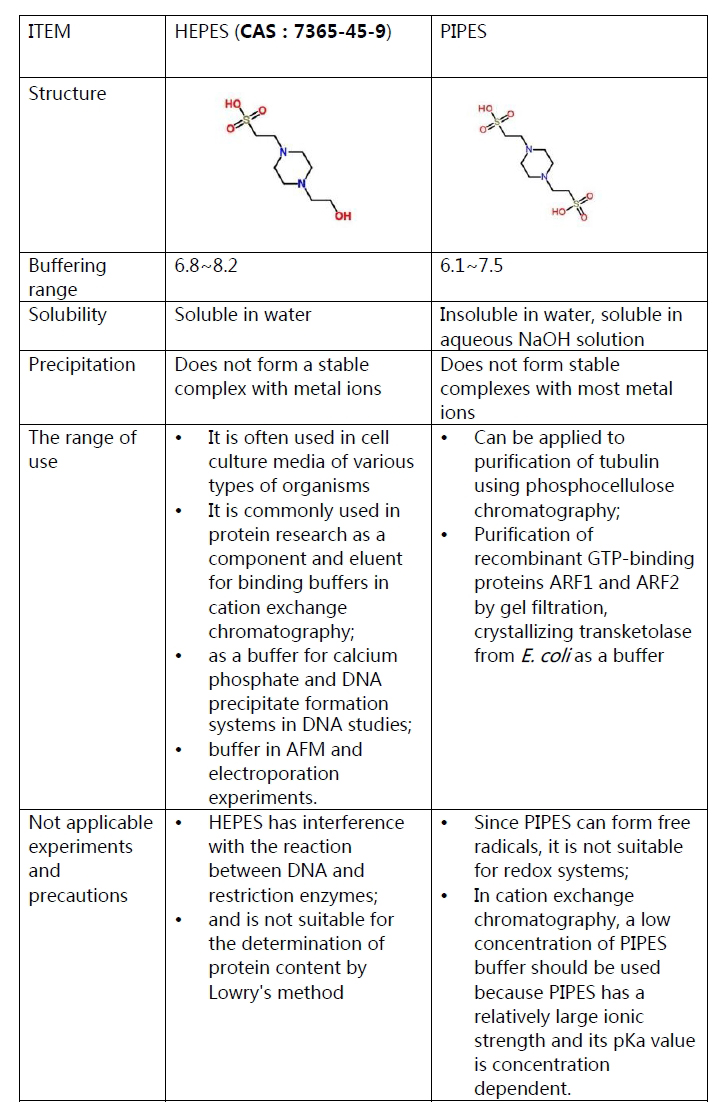In biochemical experiments, buffer solution plays an indispensable role, it can resist the influence of a small amount of strong acid and alkali and maintain the pH value closest to the physiological environment for the system. HEPES (4-(2-Hydroxyethyl)-1-piperazineethanesulfonic acid) buffer and PIPES buffer are both commonly used in biological experiments, both of which are Good's buffers and have similar structures. Many people often have doubts: Besides the structure, what is the difference between them?
Similarities between HEPES and PIPES buffers
HEPES and PIPES buffers, even all Good's buffers, have the following characteristics:
(1) pKa value between 6.0 and 8.0;
(7) Not participate or interfere with biochemical processes
What is the difference between them?

Copyright © Suzhou Yacoo Science Co., Ltd. All Rights Reserved
Friendly Links :
online service